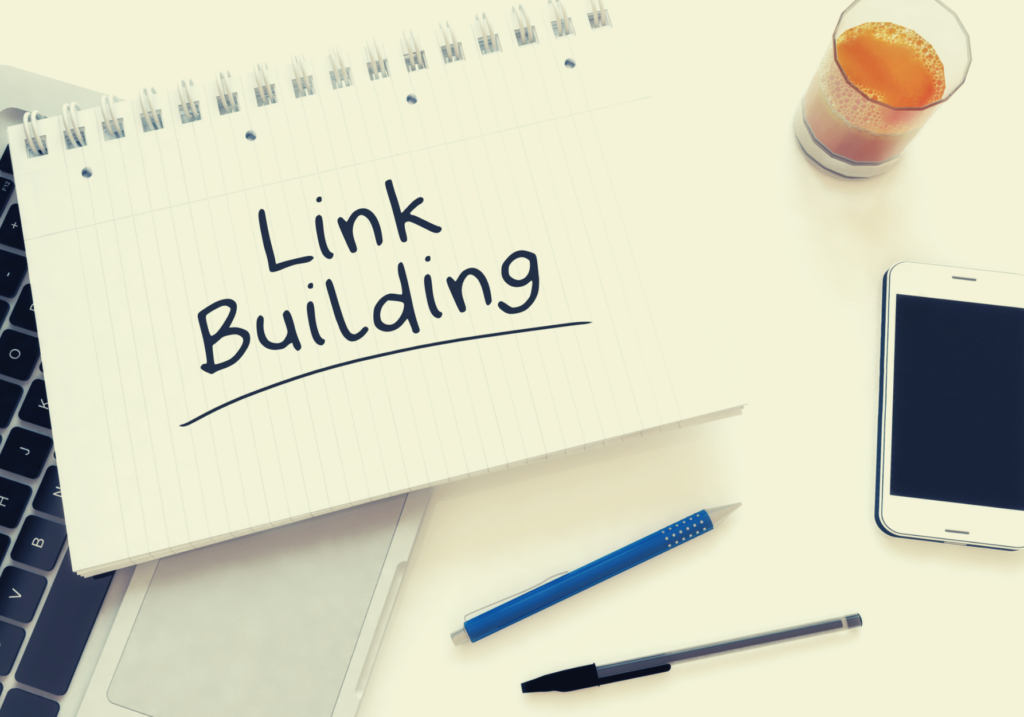When it comes to increasing the value of your organic traffic, it’s essential to use SEO landing page best practices. When you take the time to optimize your landing page, browsers have the best experience possible.
And when you make your site visitors happy, search engines notice and reward you with a higher search engine ranking.
But it can feel overwhelming to remember every detail when it comes to landing page search engine optimization.
So here’s a handy list of the top 11 improvements you can make to your SEO landing pages for better search results.
Top 11 SEO Landing Page Best Practices
Let’s get started! Here are 11 surefire ways to optimize your SEO landing pages and skyrocket your search engine rankings.
1. Do Your Keyword Research
First things first.
In order to let search engines and readers know they’re in the right place, you need to use keywords to optimize your landing page.
A keyword is a term that visitors type into a search engine to find your page. They’re also words you use throughout your content to let search engines know what the page is about.
Keyword research should be the first step in your SEO process. A great tool for keyword research is SEMRush. It offers a comprehensive suite of tools that allow you to research keywords, track competitors’ rankings, analyze competitor websites, and more.
A word of caution – make sure to avoid keyword stuffing. This is when you use the same keyword multiple times on the same page. This is a major red flag to search engines and can hurt your site in the long run.
2. Focus on Your Page Loading Speed

The page loading speed can make or break your SEO landing page’s success. Search engines like Google prioritize web pages that load quickly, considering it a key aspect of user experience.
A slow-loading page can be a major turn-off for visitors. According to Google, 53{57b8cc37fd24bce1cf64c8b05d9407ce9171516056c1f5e762677747187a0de4} of mobile users will leave a website if it takes longer than three seconds to load. That’s a ton of potential organic traffic you’re losing simply because your page took too long to appear!
Even one second of page speed improvement can make a huge difference. So try to get a page loading speed below 2-3 seconds.
Optimizing your page speed involves several steps, including:
- Compressing images
- Minimizing the use of heavy scripts and plugins
- Leveraging browser caching
- Using a Content Delivery Network (CDN).
There are plenty of WordPress speed optimization services that can boost your site’s speed.
We love the MoneyLab Page Speed for Bloggers program, which walks site owners step-by-step through every aspect of site speed optimization.
3. Prioritize Mobile Design

Mobile devices have become the go-to gadget for most internet users. As of 2021, mobile traffic accounted for over half of all internet traffic worldwide. This trend is only expected to grow, making it more important than ever to prioritize mobile design in your landing page optimization strategy.
An SEO-friendly landing page that isn’t optimized for mobile users can lead to a high bounce rate and potentially harm your search engine rankings.
Here are some best practices to ensure your landing pages provide an optimal experience for mobile users:
- Responsive Design: Your landing pages should adapt to different screen sizes without compromising the user experience.
- Fast Page Speed: As mentioned above, low loading times can drive users away. Make sure your pages load quickly on mobile devices.
- Simplified Navigation: Keep your navigation menu on smaller screens simple and easy to use.
- Readable Text: Ensure your text is large enough to read without zooming in.
- Optimized Images: Use compressed images and appropriate alt text for better page speed and SEO.
- Accessible Buttons and Links: Make sure buttons and links are large enough to tap easily on a small screen.
- Test Regularly: Use tools like Google Search Console and Google Analytics to monitor your mobile performance and make necessary adjustments.
Remember, following SEO landing page best practices means considering all users, no matter their device.
4. Pay Attention to Search Intent

Even if you do everything right and know how to optimize landing pages perfectly, none of it will help if you don’t understand the search intent of your users.
People type words into a search engine with an intent in mind – they want to find something specific, whether it’s a product, information, or service. Knowing what users are looking for when they arrive at your page is key to providing a great user experience and improving your SEO rankings.
In order to confirm the search intent for the keyword you’re targeting, type your landing page’s primary keyword into a search engine such as Google and see what type of results appear.
Are the top-ranking pages providing product information, reviews, advice, or something else?
Once you determine the search intent for your page’s primary keyword, then you can optimize your page with the appropriate content to match it. That way, you’ll have a much better chance of having your page appear higher in the search engine rankings.
5. Perfect Your On-Page SEO

On-page SEO involves optimizing individual web pages (in this case, a landing page) to rank higher and earn more organic traffic from search engines. This encompasses a page’s content and the HTML source code, including tags, meta descriptions, and alt text.
Here are some of the most important SEO elements to include on each landing page:
- Title Tag: The title tag is among the first things users see in search results. Make sure it’s compelling, includes your target keyword, and is under 60 characters.
- Meta Description: This gives users a brief overview of your page. It should contain your primary keyword and be under 160 characters.
- Alt Text: This helps search engine bots understand images. Include relevant keywords but avoid keyword stuffing.
- Internal Links: Linking to other pages on your site helps search engines understand the structure of your website and can boost your SEO.
Tools like Rank Math can help you manage these aspects efficiently. Consistently optimizing these elements can lead to improved search engine rankings and more meaningful organic traffic.
6. Build Internal and External Links

Building a robust network of internal and external links is another proven SEO landing page best practice that can significantly enhance your site’s visibility in search engine results.
Internal linking refers to the process of linking one page on your website to another page on the same website. From an SEO perspective, internal links also help distribute link equity (or ‘link juice’) across your site, strengthening the SEO value of your pages.
How many internal links per page are best? Generally, most experts agree that two to three internal links per page are enough. Others add up to 10 internal links per page.
External linking, on the other hand, involves linking out to high-quality, authoritative websites. These links add credibility to your content and can improve your site’s trustworthiness in the eyes of search engines. Just be sure to link to relevant and reputable sources that provide additional value to your audience.
Link building can be a time-consuming process, but it’s well worth the effort. Tools like Link Whisper can simplify this task by suggesting relevant internal links and helping you manage your site’s overall link structure more efficiently.
7. Make Sure Your URL Is Optimized

Optimizing your URL is the first element of landing page best practices for SEO.
A well-optimized URL is concise, readable, and descriptive, providing both users and search engines with clear information about the page content.
It should ideally include your primary keyword, align with the page’s title, and avoid unnecessary characters or words.
This not only enhances the user experience by making the URL easier to understand and remember but also signals to search engines about the relevancy of your page.

A well-structured, intuitive navigation system provides a positive user experience and keeps visitors engaged on your site. Your Landing page is ground zero for conversions, and clear navigation helps users quickly find the information they need.
Here are some tips for building easy navigation:
- Simplicity is Key: Keep your navigation menu straightforward and concise. Avoid using jargon or complex terms.
- Logical Structure: Organize your pages in a logical manner, typically with the most important pages listed first.
- Consistency: Maintain consistent navigation across all pages to avoid confusing your users.
- Clear Labels: Use clear, descriptive labels for your navigation items to make it easy for users to find what they’re looking for.
- Responsive Design: Ensure your navigation is easily usable on desktop, tablet, and mobile devices.
9. Choose High-Quality Images

High-quality images can transform your landing page, capturing attention, conveying your brand’s message, and promoting user engagement. They also enrich the user experience by making content easier to consume.
When selecting images, consider these guidelines:
- Relevance: Images should align with your content and appeal to your target audience.
- Quality: Use high-resolution images to maintain professionalism. Avoid blurry or pixelated images.
- Originality: Original images are preferred over stock photos for a personal touch.
- Optimization: Compress images and use appropriate formats (JPEG for photos, PNG for logos) to balance quality and site speed.
- Alt Text: Include descriptive alt text for SEO and improved accessibility.
Most importantly, stay consistent with your images so they are cohesive and match your branding. A picture says a thousand words, so choose wisely!
10. Add a CTA

A Call-to-Action (CTA) is a crucial element of any web page, acting as a guidepost that tells the user what to do next. And for a landing page, you want to ensure your CTA offers the reader something they can’t refuse.
Here are some guidelines for an effective CTA:
- Clarity: Make sure your CTA clearly states what will happen when it’s clicked.
- Action-Oriented Language: Use strong action verbs like “Download,” “Subscribe,” or “Buy Now” to encourage engagement.
- Visibility: Place your CTA where it’s easy to see and click, and consider using contrasting colors to make it stand out.
- Offer Value: Your CTA should offer something of value to the user, such as a free trial, a discount, or valuable information.
- Test and Adjust: Regularly test different CTAs to see what works best and adjust based on user response.
11. Place an Opt-in On Your Site

An opt-in form, such as those you can create with OptinMonster, are a powerful tool to capture visitor information and grow your email list. It allows visitors to voluntarily provide their email address in exchange for something valuable like a free ebook, a discount code, or regular newsletters.
Here’s how to effectively place an opt-in on your site:
- Strategic Placement: Put the opt-in form in a prominent spot where it will grab visitors’ attention, such as the top of your homepage, at the end of blog posts, or as a pop-up.
- Incentivize: Offer something of value to encourage visitors to sign up. This could be an exclusive piece of content, a special offer, or access to a unique service.
- Easy Process: Make the opt-in process as simple and quick as possible. Minimize the fields to fill in; usually, just an email address is enough.
- Clear Communication: Be clear about what subscribers will receive and how often they will receive it.
- Privacy Assurance: Assure your visitors that their information will be kept private and secure and that they can easily unsubscribe at any time.
Remember, the goal is to convert casual visitors into engaged followers or customers, and a well-placed, enticing opt-in form can help you do just that.
Final Thoughts: SEO Landing Page Best Practices
Creating an SEO-optimized landing page is more than just incorporating your target keywords.
It’s about designing a user-friendly experience that keeps visitors engaged and encourages them to act.
High-quality content reigns supreme, but don’t underestimate the power of SEO landing page best practices.
Ultimately, the best SEO practice is continually testing, learning, and adapting. The digital landscape is always evolving – and so should your SEO strategy.




